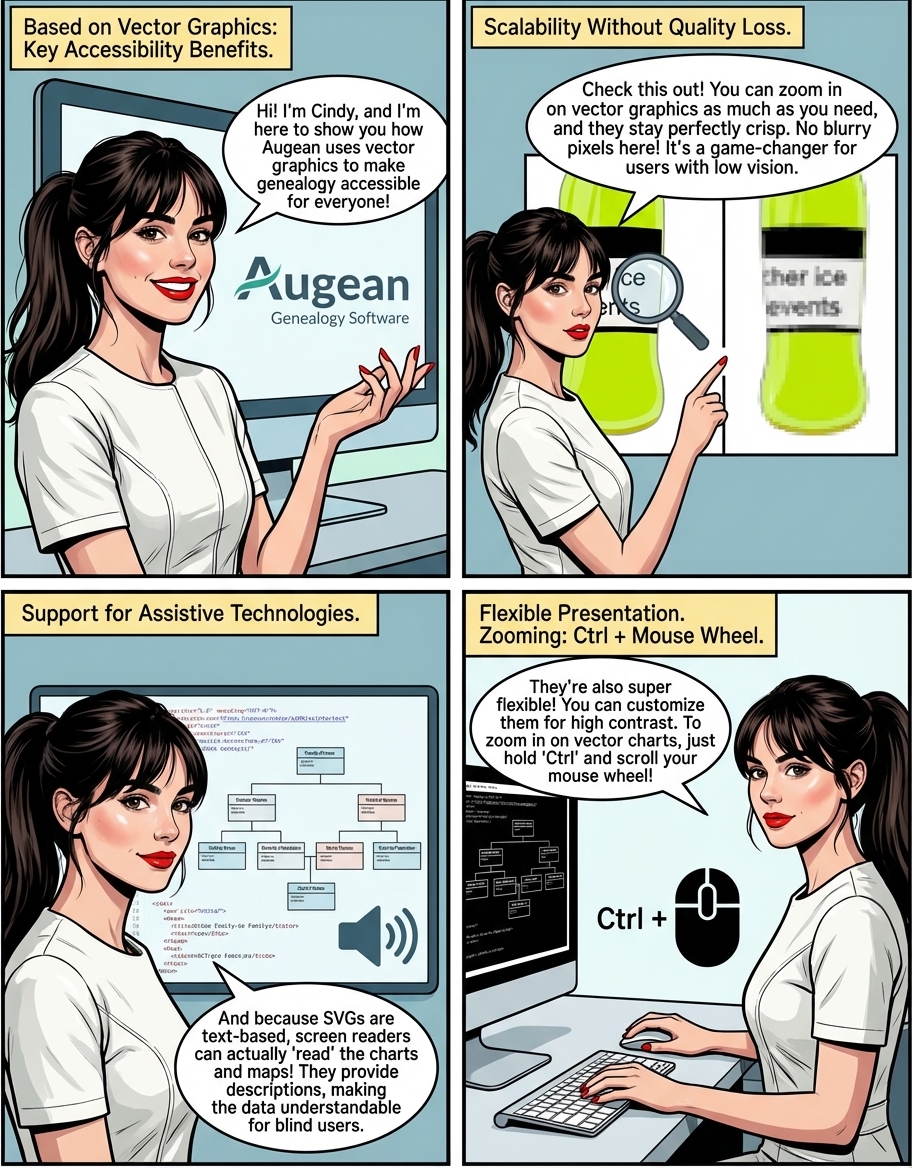
Vector graphics offer significant advantages for visual accessibility, benefiting people with a range of visual impairments.
Key Accessibility Benefits of Vector Graphics:
Scalability Without Quality Loss
• Vector graphics can be enlarged or zoomed in on without becoming pixelated or blurry, unlike raster images. This is crucial for users with low vision who require magnification to see details.
• High-quality scaling ensures that text, lines, and shapes remain crisp and legible at any size, making information more accessible on different devices and for users with varying visual needs.
Support for Assistive Technologies
• SVGs are based on XML, allowing them to include metadata such as titles and descriptions for graphical elements. These text alternatives can be read aloud by screen readers or rendered in Braille, providing essential context for users who are visually impaired or blind.
• SVG’s structure enables each component of a graphic (like a section of a chart or a region on a map) to have its descriptive text, making complex images more navigable and understandable for blind users.
Flexible and Customizable Presentation
• Because SVGs are text-based and part of the web’s Document Object Model (DOM), they can be manipulated by assistive technology, customized for high-contrast viewing, or adapted for alternative formats.
• SVGs can be styled for improved contrast and readability, supporting users with color vision deficiencies or other visual processing challenges.
• Zoom in as much as you need with no loss of details, no distortion on zoom
| For Vector charts, Zoom in/out using Ctrl +Mouse scroll wheel For 3D charts, Zoom in/out using just the Mouse scroll wheel. |

https://en.wikipedia.org/wiki/Vector_graphics